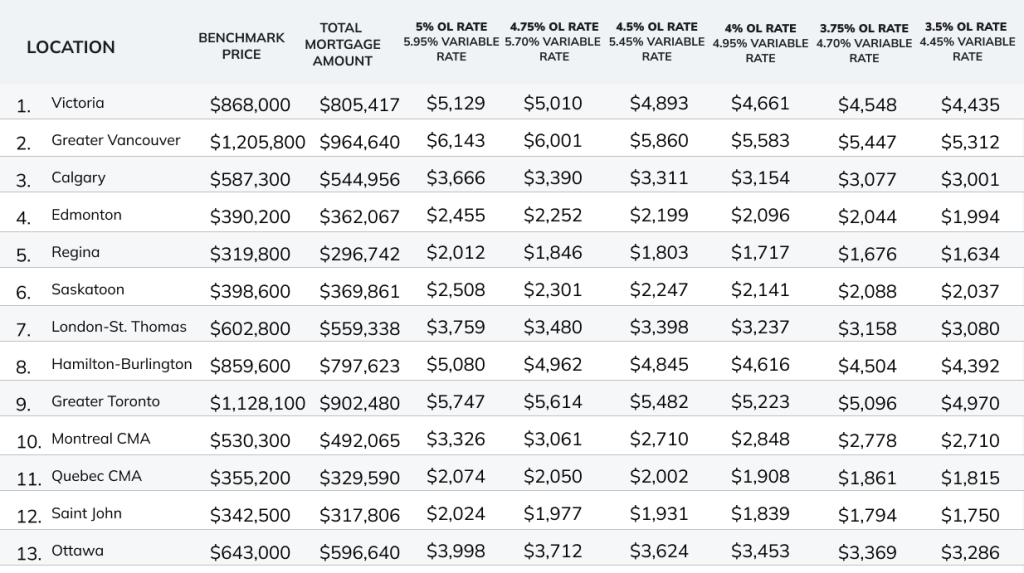Here’s how much Ottawa homeowners will save following drop in interest rates

Posted Jun 10, 2024 03:52:34 PM.
Last Updated Jun 10, 2024 03:53:41 PM.
An estimate by Zoocasa shows some homeowners in Ottawa have saved money after last week’s interest rate cut by the Bank of Canada (BOC).
The online real estate business assessed monthly payments on five-year variable mortgages after the BOC announced a 25 basis point cut, lowering interest rates to 4.75 per cent.
This decrease was the first rate cut since March 2020, following a series of interest rate hikes between March 2022 and July 2023. The next announcement is set for July 24, 2024.
According to Zoocasa’s affordability report, in major cities —including Ottawa, Toronto, and Calgary — monthly savings vary from $55 to $155.
“Highlighting major Canadian cities, payments are projected to decrease by approximately $155 per month, resulting in an annual savings of around $1,860 for homeowners,” it reads.

Ottawa homebuyers on a variable mortgage will save an estimated $286 per month, on homes valued at $643,000, as a reference point — totalling $3,432 annually.
“Total mortgage amount accounts for a 10 per cent down payment for any benchmark price under $1M, and a 20 per cent down payment for benchmark prices over $1M. Average monthly payments were determined using the total mortgage amount, which is the benchmark price minus the down payment,” noted Zoocasa.
Additionally, Regina — considered the most affordable city by the report — has an average monthly savings of $75.60, totalling $907 annually. Further rate cuts would mean homeowners could increase their savings or pay their mortgage faster, said Zoocasa.
Based on a 2024 Zoocasa survey of 1,577 people across Canada and the U.S., 51 per cent of non-homeowners cite high home prices as the primary barrier to homeownership.
If lending rates continue to drop, Ottawa’s real estate market is expected to change significantly, wrote Zoocasa.
“With lower lending rates, prospective buyers will be motivated to get off the sidelines, ultimately leading to more sales activity and the potential for an increase in prices,” Carrie Lysenko, Zoocasa CEO, said. “Now is an excellent time to get off the sidelines, before the competition gets too fierce, explore your options and take advantage of the greater negotiating power you have with the current surge in inventory.”
Most recently, BOC hiked the rate to five per cent in July 2023, holding it there until last Wednesday’s cut.
With the inflation rate coming in at 2.7 per cent in April, inflation has moved closer to the BOC’s two per cent goal.
Variable mortgage rates were notably lower than fixed mortgage rates for most of 2021 and early 2022, said BOC in its research.
Consequently, many borrowers chose variable-rate mortgages and these types of mortgages now account for approximately one-third of total outstanding mortgage debt — up from about 20 per cent towards the end of 2019.
In an affordability report by Zoocasa, James Laird, Co-CEO of Ratehub.ca said if there’s one rate cut, more will likely follow.
“Phase 1 was dropping rates super aggressively; Phase 2 was increasing them dramatically to fight inflation; Phase 3 was keeping them elevated to tamp down inflation; Phase 4 is to move to a less restrictive rate policy,” Laird said, explaining that we’re in the fourth phase of the pandemic rate policy.








